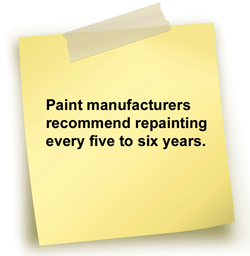Aircraft paint can beautifully reflect hours of painstaking care and preparation—or it can cover a multitude of sins. The trouble is, you can’t always tell which applies to your aircraft until long after the job is finished.

According to George Bajo, completions sales representative for Duncan Aviation, “Anyone can shoot a glossy coat of paint. But the value is in the details.”
He goes on to suggest operators conduct a visual inspection for dirt specs in the paint finish as one identifier of a quality job. “While a few dirt specs should be expected, a large number is cause for concern.”
The attention to detail at the sealed windows and cleanliness of the painted landing gear are also evidence of a job done right. New stair treads, dressed boots, wiped down wheels and wheel wells, painting inside of gear doors, radome boots that don’t yellow and erosion tape are also extras that customers should expect.
“It’s all about the details,” George says. “That’s what you pay for.”
Duncan Aviation Field Guides
To help aircraft owners identify a quality paint job and decide when to take an aircraft in for a touchup or full repaint, Duncan Aviation industry experts answer questions about pressing paint maintenance issues in the recently updated “More Than Skin Deep: Paint Maintenance and Turbine Aircraft Value” field guide.
This field guide explores routine maintenance and turbine aircraft market value, paint processes, and criteria to consider when selecting an aircraft paint service provider.
Paint Maintenance Topics- Paint Maintenance Topics
- How to Recognize A Quality Aircraft Paint Finish
- How Long Does Aircraft Paint Last?
- Routine Maintenance & Paint Integrity
- Aircraft Paint Services
Duncan Aviation's field guides address topics of importance to business aircraft operators around the globe and are written by our very own technical experts.
These documents are available as free PDF downloads.



